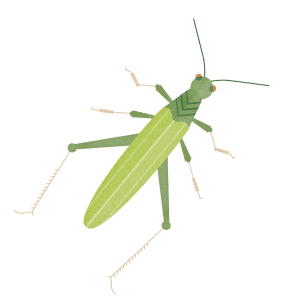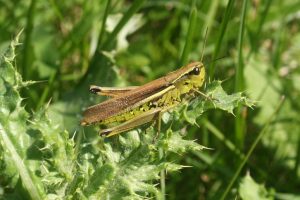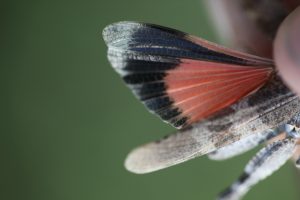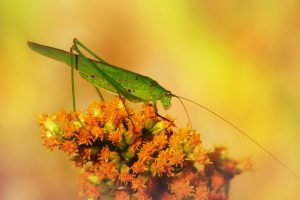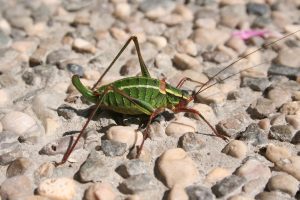Grasshoppers
Factsheet: Within the grasshopper survey we assess crickets (Ensifera), grasshoppers and locusts (Caelifera) and mantids (Mantodea). Grasshoppers can be found in all types of grasslands and characterise grasslands like few other animal groups. Their habitat requirements are relatively specific, which makes them a good indicator group. The grasshopper and mantid fauna of South Tyrol encompasses 87 species, 6 species have already been made extinct over the last 100 years and about one third of the existing grasshopper fauna is endangered.
Methods: For the grasshopper survey we use the same plots as for the vegetation survey (10 x 10 m). We start the grasshopper by sweep netting a 15 m transect along the diagonal of the botanical plot. In a second step follows an assessment for exhaustiveness. This includes additional sweep net beats and a detailed hand search. The species are identified by both visual and acoustic assessment. The survey takes place once a year in late summer.

